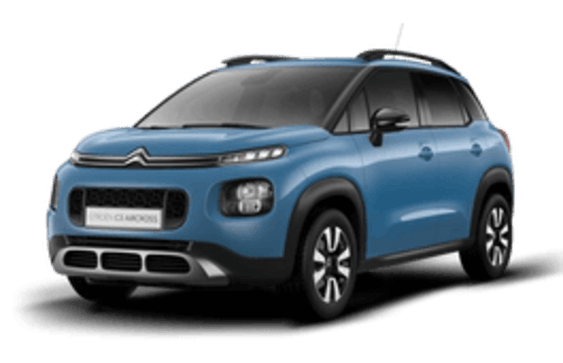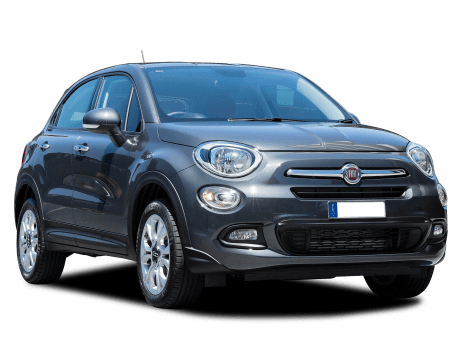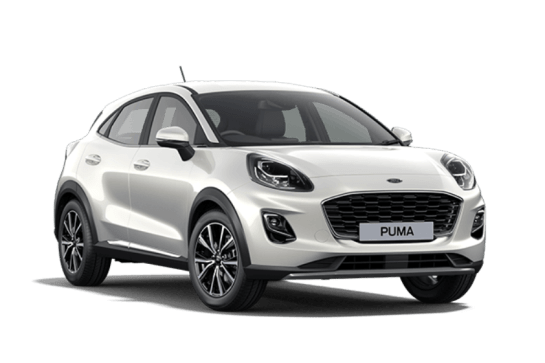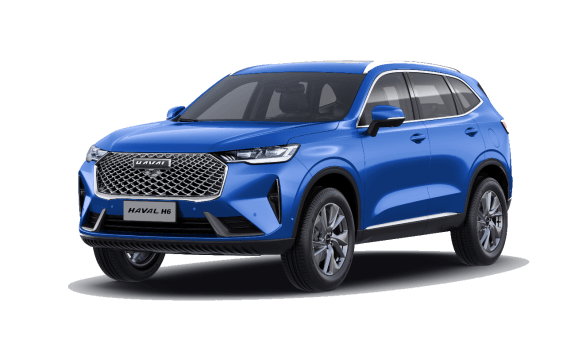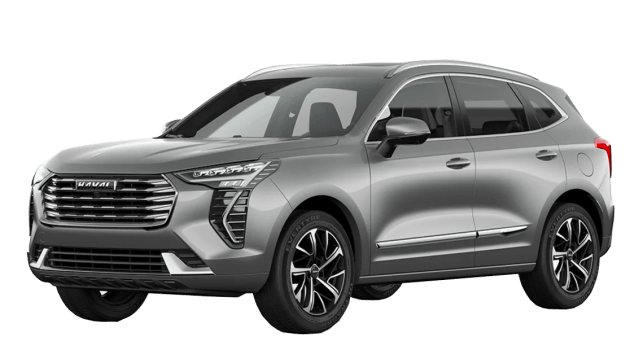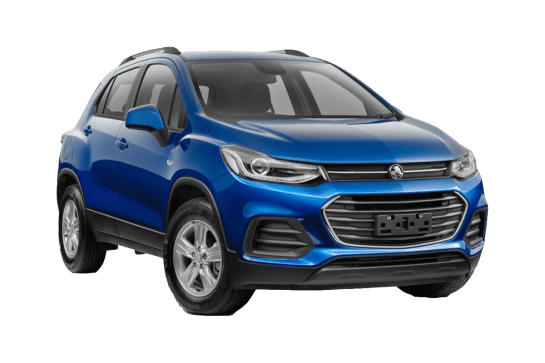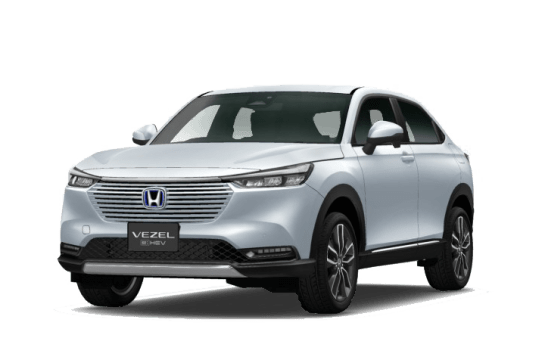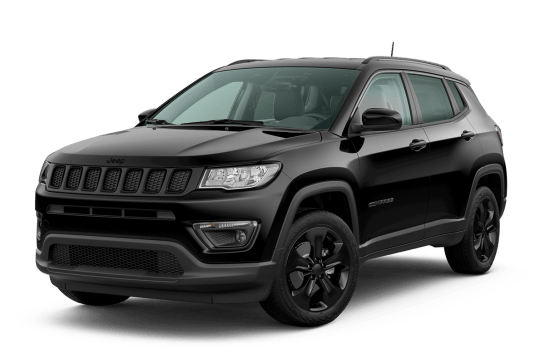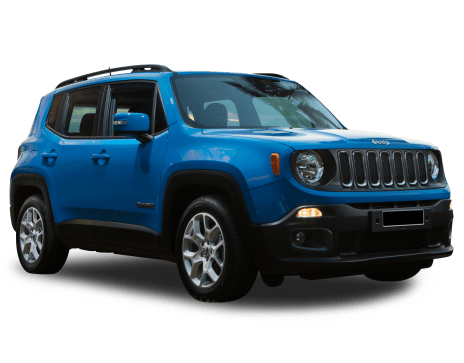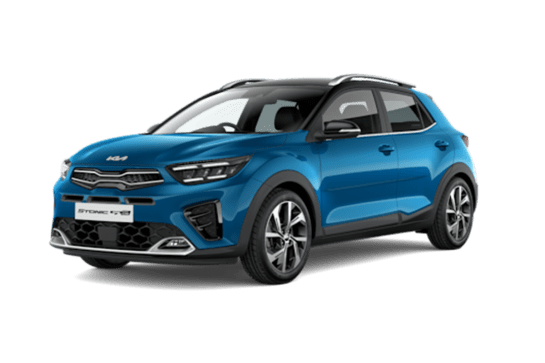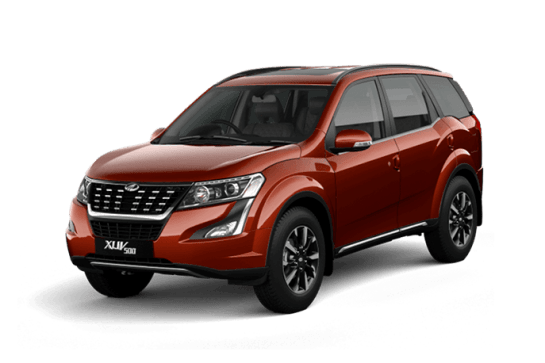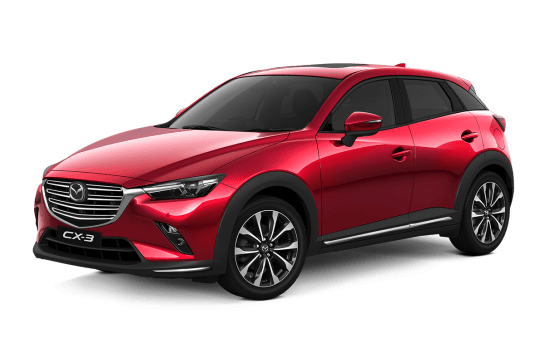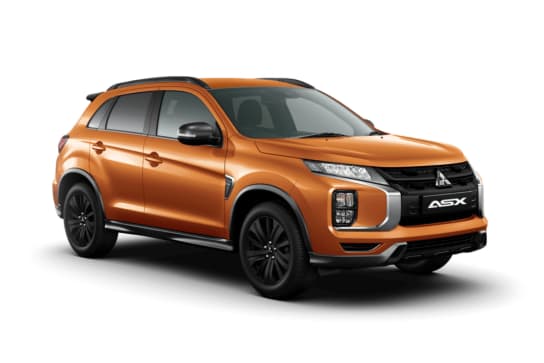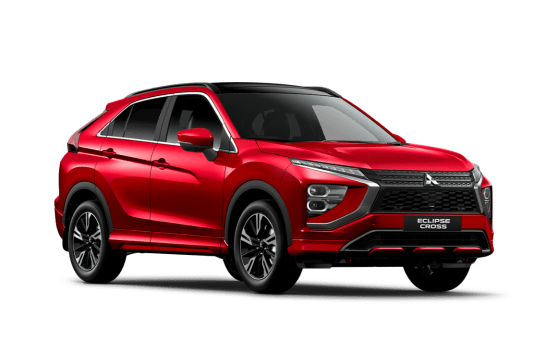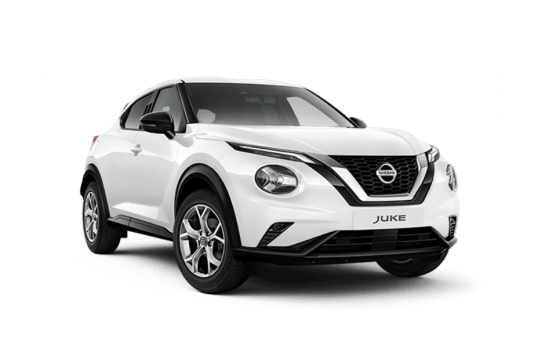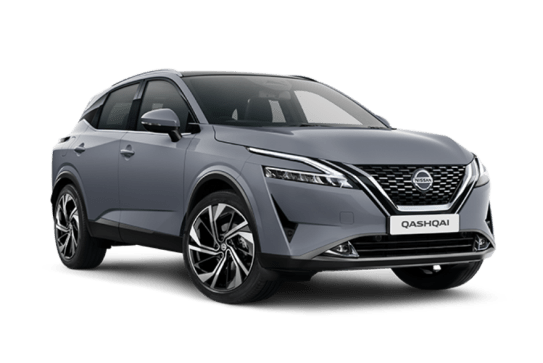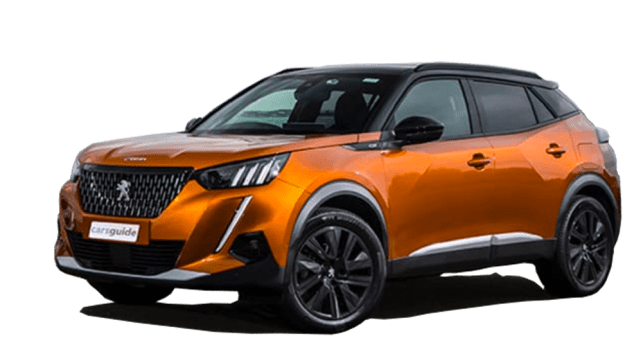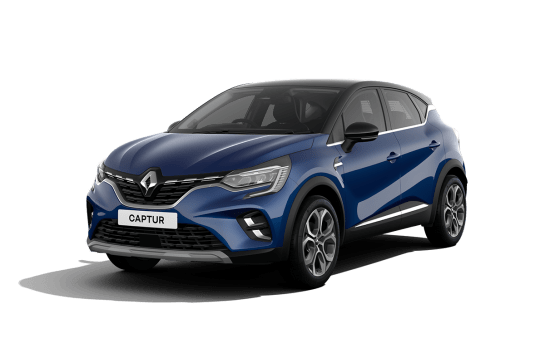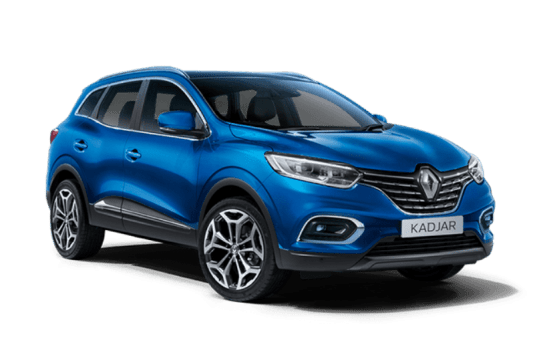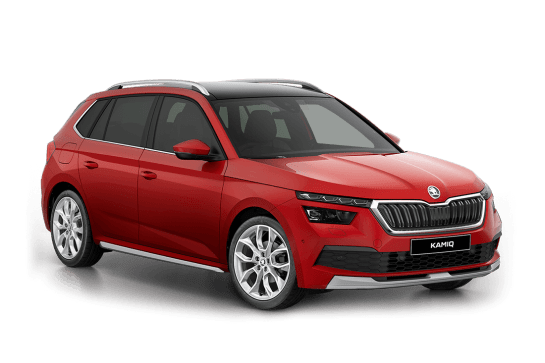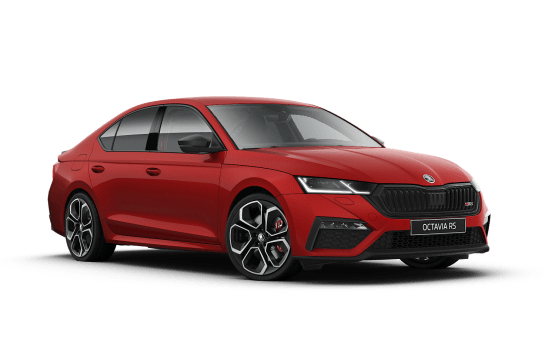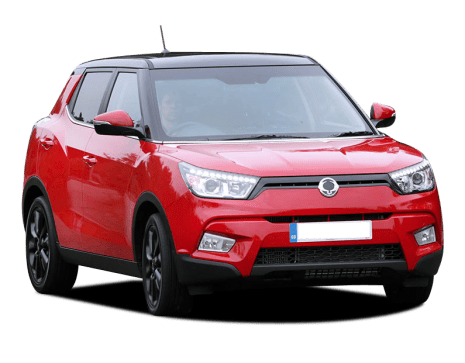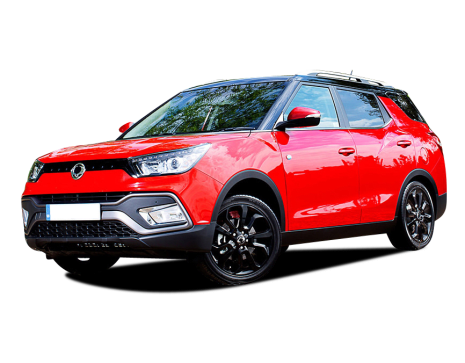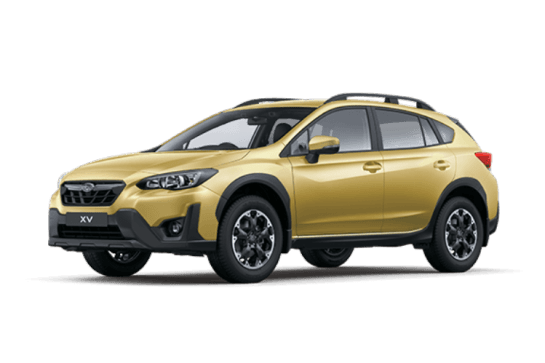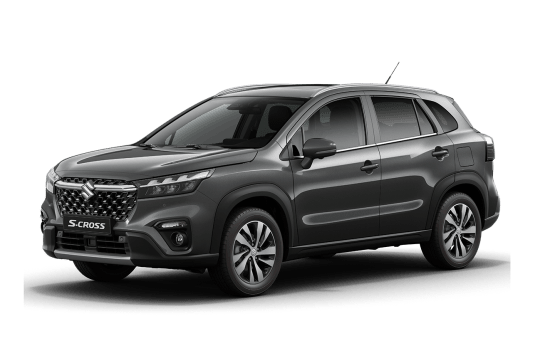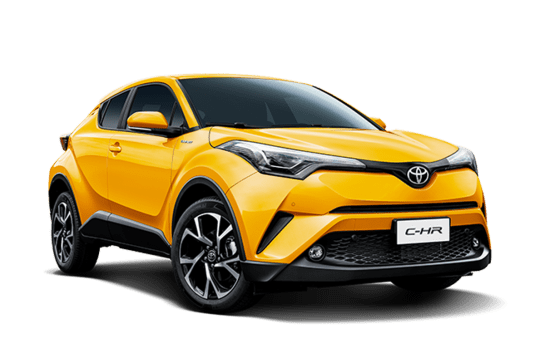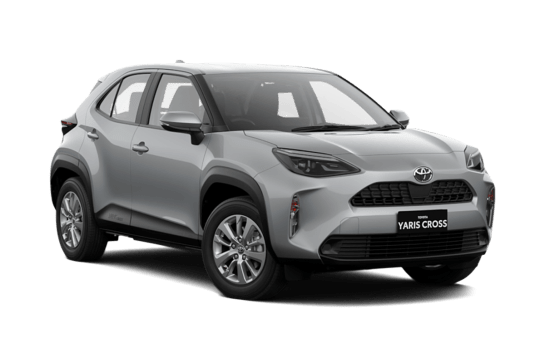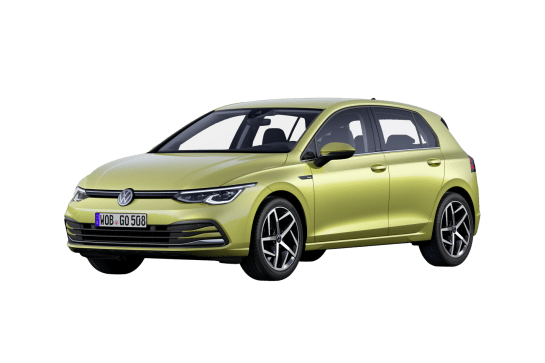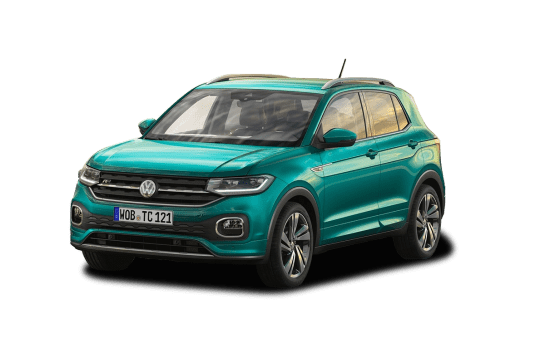
Honda CR-V VS Nissan Qashqai
Honda CR-V
Likes
- Exceptional value for money
- Superb engineering
- Excellent family-focused packaging
Dislikes
- No full-sized spare wheel
- No hybrid AWD availability
- Firm ride
Nissan Qashqai
Likes
- Attractive design inside and out
- Strong yet frugal performance
- Quality presentation
Dislikes
- e-Power limited to costly Ti grade only
- Requires 95 RON premium unleaded
- No spare wheel – boo!
Summary
Honda CR-V
In the distant future, automotive historians will look back at the Honda CR-V as one of the true SUV originals.
Sure, it and the conceptually-identical Subaru Forester, trailed the trendsetting Toyota RAV4 of 1994 by three years, but collectively all three Japanese brands broke and then reset the Australian family-car mould in lightning-quick time. Too much so for the floundering local car industry to ever catch up.
Today, they remain the blue-chip mid-sized SUV contenders.
Six generations in, how does the completely-redesigned CR-V in all-new e:HEV (petrol-electric hybrid) guise stack up? Let's find out!
Read more about
- Honda CR-V 2024 review: VTi L7
- Will Honda Australia Elevate its number of SUVs with the 2024 WR-V to compete against the Mazda CX-3, Nissan Juke and Toyota Yaris Cross?
- Lots of Honda electric cars on the way including 2024 Prologue SUV and new sports car concept to be shown at Tokyo - but will Australia really continue to miss out?
| Safety rating | |
|---|---|
| Engine Type | 2.0L |
| Fuel Type | — |
| Fuel Efficiency | 5.5L/100km |
| Seating | 5 seats |
Nissan Qashqai
Everybody loves an underdog story and Nissan’s one is a beauty.
For decades, the model we knew as the Pulsar struggled to crack the European small car market against the likes of the Ford Focus and the company was in serious strife. Worthy but derivative, it struggled to stand out.
So, for its 2007 replacement, some bright sparks convinced Nissan to reimagine the hatch by butching it up, raising the ride height and changing the name to something exotically daft. And, voila, the original Qashqai was born.
Read more about
- Comeback kings: How Nissan turned around its sales slump with new X-Trail, Qashqai and Pathfinder SUVs
- Nissan to take on Tesla? Three UK-built electric cars to join upcoming Nissan Ariya SUV as brand bets big on EVs
- How many people are really buying hybrids? We break down the Nissan X-Trail to see how many buyers opted for the Toyota RAV4-rivalling e-Power hybrid car version | Analysis
Initially sold in Australia as the Dualis, it quickly became a global smash hit, finally catapulting the brand from follower to leader, creating the small SUV segment as we know it today.
If you love your Hyundai Kona, Mazda CX-30, Toyota C-HR or VW T-Roc you have Nissan’s ingenuity to thank.
Now it’s at it again with the Qashqai e-Power – an EV-first hybrid using a petrol engine to only charge its battery so an electric motor can drive the front wheels. More than a Prius, less than a Tesla, then.
The next big thing or a dead end? Let’s find out.
| Safety rating | |
|---|---|
| Engine Type | 1.5L turbo |
| Fuel Type | Electric/pulp |
| Fuel Efficiency | 5.2L/100km |
| Seating | 5 seats |
Verdict
Honda CR-V8.5/10
The most-expensive version of the latest Honda CR-V is one of the most convincing family-orientated mid-sized SUVs in Australia, regardless of price and positioning.
For efficiency, economy, driveability, packaging, safety, quality, refinement and value-for-money, it is an outstanding value proposition. Don't buy a RAV4 or Forester hybrid before checking this one out.
We cannot wait for the e:HEV hybrid powertrain to filter down to cheaper grades, to make the best CR-V in decades even more accessible.
Nissan Qashqai8.3/10
So, should you give up on the Qashqai e-Power, or surrender to its many and varied charms? Well, when the Japanese brand really tries, as it clearly has here, Nissan can be as imaginative and as innovative as any carmaker on the planet.
And given the latest Qashqai out of Europe is so advanced and unique within its SUV category, this deserves to be on everybody’s shortlist. With e-Power under that pretty bonnet, this Ti is a leader, not a follower. This underdog could win best-in-show!
Note: CarsGuide attended this event as a guest of the manufacturer with accommodation and meals provided.
Design
Honda CR-V
Though considered handsome, the CR-V has never been a style leader. Function over form has always been its calling card, and Number Six is no exception.
Cleanly drawn, with boxy proportions and a blunter, squarer nose providing a contemporary if somewhat bland appearance, the Thai-built Honda lives on the larger end of the mid-sized SUV scale, resulting in lots of space and practicality.
Yet there are interesting and worthwhile details to explore, like narrower-than-usual windscreen pillars for exceptional forward vision.
The same applies to the considered positioning of the exterior mirrors, minimising blind spots, while deep glass areas allow light to flood in.
The stylish, Volvo-esque L-shaped tail-light graphic probably connects most clearly with past CR-Vs, giving the latest version an elegant overall presence.
Compared to the old model, the latest version's wheelbase has been stretched by 40mm to 2700mm, while front and rear tracks are 10mm wider, coming in at 1611mm and 1627mm, respectively.
Note that the front-drive models' ground clearance is 198mm – 10mm less than on the (non-hybrid-only) AWD grades.
Nissan Qashqai
There’s nothing radical or ground-breaking about the third-gen version’s styling, other than it’s pretty and unmistakably a Qashqai. Even from tens of metres away. That’s a hallmark of good design.
But, like an Oscar’s worthy red-carpet outfit, the familiar lines remain classy on this third imagining, with a particularly strong front-end LED lighting graphics presence against a modern grille treatment, pleasing classical proportions and an elegantly executed posterior.
Unless you’re a train spotter-type or work for Nissan PR, it’s easy to miss the very minor details setting this particular Ti apart. Nissan dubs the extra glossy black lipstick up front as its ‘premium grille’ appearance. There’s a smattering of e-Power badges. And ground clearance drops 5.0mm, to 175mm. That’s it.
As with all current Qashqais, the e-Power offers larger packaging compared to before, as a result of adopting a fresh “global Renault-Nissan-Mitsubishi Alliance platform”. The upshot is a longer, wider and taller small SUV, to the tune of 31, 30 and 29mm, respectively.
And, for the benefit of rear seat occupants, the wheelbase has also been stretched by 19mm.
It’s worth noting that, despite Nissan’s best efforts to keep the kilos down by deploying aluminium for the doors, bonnet and front guards (resulting in a commendable 60kg saving while body stiffness rises by 41 per cent), the e-Power attracts a hefty 200kg penalty over the ICE Ti.
Does this adversely affect efficiency? Please keep reading to find out.
Practicality
Honda CR-V
Little wonder the CR-V was the world's third most-bought SUV worldwide in 2023. It's big enough for most families' needs... and then some.
This is immediately apparent the moment the big doors are opened up nice and wide, revealing an airy, spacious and extremely user-friendly interior.
The Japanese brand has striven successfully for greater visual symmetry, harmony and operational simplicity in the dashboard's design and layout.
And, sure, the 9.0-inch touchscreen lacks the wow factor of vast buttonless displays as found in flashy alternatives such as the disappointing Chery Tiggo 7, but it works very effectively.
Hondas have always nailed the driving position bit down pat, and the RS is no exception, with ample seat and steering column adjustment, considered controls placements and unimpeded views of the instrumentation and road ahead due to the aforementioned thin pillars.
The instrumentation cluster is an electronic set-up offering the driver the choice of either super crisp and ultra-clear analogue dials, or somewhat fussier bar graphs, with a digital speedo augmenting both.
There's so much to enjoy and so little to criticise inside Honda's mid-sized SUV. Along with space to stretch, the front seats are notably comfortable and supportive, as several hundred kilometres sat ensconced in them proved. Both sides have electric adjustment at this price point, too.
Ventilation also rates highly, with the honeycomb full-dash-length grille and lovely toggle switches bringing aesthetic and tactile delight, respectively.
And, reflecting the CR-V's US focus, storage is on a large and helpful scale, offering bottle holders in the doors amongst other places to stash things in and on.
Moving to the rear seat area, entry/egress is ridiculously unimpeded, with a decently-shaped bench.
Families are also likely to appreciate series-best legroom, backed up by a handy amount of girth – always a good thing.
You're also met with occupant-facing air vents, overhead grab handles, even more door storage, the obligatory folding centre armrest with cupholders, front-seat-sited map pockets and a pair of USB-C outlets.
However, the standard sunroof does rob some headroom so people taller than about 180cm had better try before they ride, though the 60/40 backrest reclines to 16 positions and that's helpful here.
Being a hybrid, the RS e:HEV misses out on the sliding bench which adjusts by 190mm in other CR-Vs.
Vision out is exemplary back there, enhancing an already spacious and airy ambience. But if the front seat area majors on Japanese quality, the rear is hardly premium, with plenty of dreary cheap plastic trim, betraying the Honda SUV's focus on the price-driven American market. But nothing squeaked, rattled or broke, thankfully.
Further back, the tailgate rises remotely quickly enough, and there's quite a wide and long area to store things, but the electrification elements make for quite a high and uneven floor – though a deep bin area is also provided to hide stuff in.
There's also just a can of goo in lieu of a spare wheel.
Cargo capacity rises compared to the previous CR-V, ranging from 589 litres with the rear seats up, to 1636L, or 1072L if measured only to the window line.
Nissan Qashqai
Being bigger than before brings benefits.
The Qashqai’s doors open super-wide. Great for entry/egress, winning over SUV sceptics and inflicting damage on adjacent vehicles.
Once sat inside, the people-pleasing presentation continues in this sumptuously-presented Ti grade, with eyes immediately drinking in the pleated leather-faced seat patterns, subtle colour-coded trim, attractive dashboard architecture and the surprising depth of quality in the materials deployed.
As we discovered to our delight, all are further flattered when drenched in the dappled rays of an early autumnal afternoon sun, courtesy of that panoramic hole in the roof.
If you’re expecting the common-sense dullness of some less-ambitious Nissans, a significant mindset reset is required, highlighting the European aspirations of this cosy yet comfy British-built SUV.
In our comparatively brief time in the Qashqai, we also noted the excellent driving position, enveloping support of the fine front seats, user-friendliness of the digital displays (including the head-up dials), clear instrumentation that still manages to convey as much, or as little, data as you need without bamboozling you with info-overload, generous storage and an effective climate-control system.
Plus, that vast sunroof includes a full-sunblock screen – a feature sorely missing in many European and Chinese branded alternatives. Others, take heed.
Our main objection is obstructed over-the-shoulder and rear vision, that’s very obvious when parking in tight spots. Those cameras are essential.
Moving out the back, it’s fairly spacious for most people though knee room remains tight for longer-legged passengers. Most expected amenities are present, such as face-level air vents, USB-A and -C outlets, a centre armrest with cupholders and overhead lighting. And the upmarket ambience carries through, too.
But don’t go expecting any sliding or reclining back-seat versatility, as you might find in some rival SUVs.
Now, here’s an interesting fact. Nissan says there’s no drop in cargo capacity between the e-Power and the regular ICE-powered version of the Qashqai. Indeed, the figure increases, from 418 litres to 452L and, if you lower the back seat, from 1513 to 1518L.
So, how does this magic work? The location of the battery underneath the front seats (rather than under the rear bench) helps, as well as the elimination of the ICE Ti’s 19-inch alloy spare wheel for that infernal tyre-repair kit.
Win some, lose some!
Price and features
Honda CR-V
At the time of writing, choosing the hybrid version over the regular petrol-turbo CR-V means forking out for the top-of-the-line RS. Less expensive (and luxurious) hybrid grades are expected soon.
Starting from $59,900 drive-away, it isn't cheap, especially as its two closest rivals – the RAV4 Cruiser Hybrid and Nissan X-Trail Ti e-Power e4orce – offer all-wheel drive (AWD) for around the same price, while the Honda is front-wheel drive only.
At least the RS e:HEV isn't short on equipment, especially safety, with 11 airbags, Autonomous Emergency Braking (AEB), blind-spot alert, lane-keep assist, rear cross-traffic alert and adaptive cruise control included. Check out our safety section below for more details.
Being the CR-V flagship, you'll also find adaptive LED headlights, a panoramic sunroof, dual-zone climate control, leather upholstery, powered and heated front seats, a 9.0-inch touchscreen, sat-nav, wireless Apple CarPlay/wired Android Auto, Bose premium audio with 12 speakers, digital radio, a wireless charger, privacy glass, hands-free powered tailgate, roof rails, front and rear parking sensors and 19-inch alloys.
Note, however, there is no spare wheel, just a tyre-repair kit. Not good enough. For why, please see the Cost of Ownership/Warranty section.
There's also five years' free subscription to 'Honda Connect', bringing remote-control operation for climate control, lights and locking/unlocking, trip log data, location status, geo-fencing and emergency callout.
What's missing? Along with the aforementioned AWD, some rivals at this price point include larger alloy wheels if that's your thing.
Otherwise, the RS e:HEV brings plenty of features to the table. Sadly, not of the picnic variety, however, unlike in the first two generations of CR-V (1997 and 2001).
Nissan Qashqai
Right now, there’s only the single, Qashqai Ti e-Power grade for Australia.
Starting from $51,590, before on-road costs, it adds $4200 to the price of the regular 1.3-litre turbo-petrol Ti, and is gunning straight for more conventional hybrids like the Hyundai Kona N-Line HEV, Honda’s superb ZR-V e:HEV and the new, second-gen Toyota C-HR Koba.
Now, they’re all conventional hybrids with their internal combustion engine (ICE) doing the driving, so the Nissan has a point of difference – and possibly an advantage – over those.
Note, though, that both the C-HR and Kona hybrids also come in grades costing under $45,000 – something the Qashqai e-Power won’t match until the lower-spec versions arrive in Australia sometime later on.
At least Nissan sees fit to stuff the Ti with luxuries like adaptive LED headlights, a head-up display, panoramic sunroof, hands-free powered tailgate, a 10-speaker Bose audio system, heated front seats with massaging function, pleated leather trim, front and rear USB A/C outlets and 19-inch alloys.
These come on top of expected goodies like dual-zone climate control, a 12.3-inch central touchscreen, satellite navigation, wireless Apple CarPlay, wired Android Auto, digital radio, a wireless phone charger, a surround-view camera, auto on/off headlights and wipers, auto-folding exterior mirrors and ambient lighting.
There’s also a host of welcome driver-assist tech. More on those in the Safety section below.
However, the e-Power loses the essential temporary spare wheel for the fiddly and often-useless tyre repair kit. Not good enough, Nissan.
That aside, they make for a finely-crafted and properly fully-equipped small hybrid SUV out of Europe, that, when considered in that light, offers strong value-for-money against technically less-intriguing alternatives.
Advantage, Qashqai.
Under the bonnet
Honda CR-V
The CR-V hybrid is powered by a 2.0-litre four-cylinder direct-injection Atkinson Cycle petrol engine.
Married to a pair of electric motors that make a combined power output of 152kW, it delivers a system total of 135kW at between 5000rpm and 8000rpm, as well as an impressive 335Nm of torque from 0-2000rpm.
It sends drive to the front wheels via a single-speed electric continuously variable transmission (e-CVT), featuring deceleration paddles that help redirect regenerative braking energy back into the battery.
Tipping the scales at 1771kg (kerb), the power-to-weight ratio is 76.2kW/tonne. Not great, but the e:HEV's brawn lies in its hefty torque output.
Nissan Qashqai
Under the e-Power’s bonnet is a 1.5-litre three-cylinder, turbo-petrol engine featuring a unique and intriguing, efficiency-enhancing yet performance-boosting, variable compression ratio.
It produces 116kW of power and 250Nm of torque on its own, and is mated to a small-ish 2.1kWh lithium-ion battery and inverter, powering an electric motor that sends drive, via a single-speed reduction-gear transmission, to the front wheels. A set-up Nissan calls 'e-CVT'.
Combined power and torque maximums are 140kW and a considerable 330Nm, respectively. Tipping the scales at 1728kg, the Ti e-Power’s power-to-weight ratio is a healthy 81kW/tonne.
Along with 'Sport' and 'Eco' modes, there’s also a one-pedal driving option that provides electricity-saving regenerative braking that washes off a good deal of speed to substantially slow you down. It's a stepping stone between a hybrid and full EV and you never need to plug it in anywhere.
Nissan made myriad changes to the MacPherson-style strut front and multi-link rear suspension design to accommodate all the additional electrification tech.
Remember towing capacity is half that of the regular Qashqai’s 1500kg (braked trailer), dropping to the latter’s 750kg unbraked figure.
Efficiency
Honda CR-V
Like Toyota's hybrids, Honda's do not need to be plugged in; the small 1.06kWh lithium-ion battery fitted is charged by either the engine or via regenerative braking energy.
Honda says the e:HEV RS on the Urban, Extra Urban and Combined cycles should average 4.9, 5.8 and 5.5 litres per 100km, respectively. The latter figure equates to a carbon dioxide emissions rating average of 125 grams/km.
Fitted with a 57L fuel tank, that means the driver can expect to achieve about 1035km between refills – and on 91 RON regular unleaded petrol at that.
Out in the real world, we managed a still-laudable 6.5L/100km during our time with the RS e:HEV, achieved through a mixture of inner-urban and open-road driving.
Nissan Qashqai
Nissan reckons the Ti e-Power should average around 5.2L/100km on a combined urban, extra-urban cycle, which equates to a carbon dioxide emissions rating of 117 grams/km.
We managed a still-commendable 5.8L as indicated by the trip computer, but we did not have a chance to test it at the pump.
Note, as with all Qashqais, the e-Power needs more-expensive 95 RON premium unleaded petrol. Brimming the 55L fuel tank, expect a range of up to around 1050km between refills. That's 150km up on the regular 1.3L turbo versions.
Driving
Honda CR-V
If the good-looking e:HEV RS's compelling value and great interior don't convince, then the driving experience might.
Building on five generations of gradual evolution, the latest CR-V uses an updated version of the previous model's all-new architecture – a very solid foundation to build an SUV upon.
Pairing that with Honda's latest hybrid electrification tech is the automotive equivalent of putting together peaches and cream. Even to a vegan.
From the first push of the starter button, the driving experience is seamless, elevating the e:HEV to the premium realm.
As it's in EV mode for much of the time at lower speeds, the SUV powers forward quickly and effortlessly, gliding along with a determined hum.
When the petrol engine eventually engages, it does so smoothly and quietly, yet the electric motor's influence and effects are far from done; the driver can sense all that torque (335Nm, remember) just from the immediacy of the throttle response.
Result? The CR-V's mid-range thrust makes it a deceptively rapid vehicle, accelerating instantly and surging strongly in almost no time at all. Keep an eye on that speedo, too, because the powertrain delivery is silken.
Furthermore, and going against type, the brakes thankfully avoid the wooden feel of many rival hybrids, and instead pull up immediately and with normal and natural pedal pressure.
Additionally, the paddle shifters provide variable off-throttle braking, though not quite down to a full stop.
Honda's chassis engineers have earned their keep when it comes to the CR-V's dynamics, too.
Light and easy around town for painless parking, the steering weights up nicely at higher speeds, allowing the driver to get into a linear rhythm with the machine, and without it feeling nervous or top-heavy when corners get tight – a rarity in an electrified SUV of this size.
And while it lacks the intimate connection of sportier SUVs like the Mazda CX-5 (given the RS badges), most people will appreciate the Honda's calm and controlled handling and road holding.
For the record, suspension in the CR-V consists of MacPherson-style struts up front and a multi-link rear end. However, a bit more suppleness would transform the e:HEV.
Wearing 235/55 R19 tyres, its ride around town is fine over larger bumps, absorbing them smoothly and without fuss, while overall tyre/road noise intrusion is pretty good, too.
Yet smaller-frequency surface irregularities, like joins and rail tracks, are not so easily dealt with, resulting in some sudden harshness.
Driven over exactly the same roads as the ZR-V e:HEV equivalent, it's clear there isn't quite the polish or sophistication that makes the smaller Honda SUV a highly-convincing dynamic and refined alternative to luxury German alternatives.
Other than the occasionally fidgety suspension, the CR-V hybrid makes for a dynamically impressive family SUV.
Nissan Qashqai
Two things are obvious soon after the driver presses the starter and silently whooshes away in a Qashqai Ti e-Power.
Firstly, there’s a real weight to it, highlighting this as a solid (as well as heavy) vehicle of substance. And, secondly, once over this initial impression, everything then seems completely normal and intuitive. There’s nothing alien going on here.
Despite the mass, acceleration is brisk, with throttle response becoming even livelier once on the move, since you can feel all that instant torque on tap, even with a light flex of your right foot.
Pushing down harder, it should soon become clear this is a fast machine, so keep an eye on that digital speedo display. It caught us out a couple of times during our test drive through central Victoria.
Using the driving modes reveals varying behaviour according to the settings. In Eco mode the e-Power has a smooth and relaxed gait; performance is Normal seems more spirited while in Sport responses are appropriately stronger and more urgent.
It’s worth keeping the latter in mind, because the chassis is set up for a sporty, Euro feel, meaning there’s a tautness to the suspension that's a little at odds with the plushness of the interior. This isn’t a soft, bouncy ride.
Rolling on a 235/50 R19 wheel and tyre package, there’s a pleasing balance of steering feel, handling agility and roadholding grip, resulting in a dynamically athletic and reassuringly controlled vehicle, even at speed through tighter corners. However, as with the e-Power’s acceleration delivery, the keener driver has to first push through a level of inertia to discover this.
One trait worth keeping in mind is that the tail can become loose and even slide out a little before the ESC quickly yet calmly reels it back in, if you attempt to take a bend too fast. Beware, though, that as the roads were hot and dry during our drive, we cannot attest to how this behaviour will manifest in the wet. Should be fun if you’re a keener driver. We weren’t expecting that.
What else? The easy e-Pedal function works well, providing significant braking up to a point, without bringing the vehicle to a full stop. It soon feels second nature.
Plus, unlike most Toyota hybrids, many EVs and even the X-Trail Ti e-Power we tested recently, the smaller-brother Qashqai avoids that oddly wooden brake-pedal feel, though again, a test in inner-urban traffic may reveal something else.
And, finally, over coarse-chip surfaces, there’s a bit too much tyre or road-noise intrusion coming inside, though over the smoother stuff, you’ll also feel blissfully cocooned in the comfort the Ti packaging provides.
Overall, then, the Qashqai e-Power is a swift, agile and entertaining drive, as well as safe and secure, revealing a further depth to Nissan’s engineering talent and capability.
Safety
Honda CR-V
Honda has yet to publish ANCAP crash-test results for the latest CR-V. For what it's worth, the previous two generation models achieved a maximum five-star assessment.
Today's CR-V comes with 11 airbags, including two dual front, dual side, dual front knee, front-centre, dual rear side and full-length curtains.
On the active-safety front, there is AEB with pedestrian and cyclist detection, low-speed braking control front and rear, road departure mitigation (RDM), forward-collision warning, blind-spot alert, lane-departure warning/keep, rear cross-traffic alert, adaptive cruise control (with full stop-go), low-speed follow and traffic-jam assist, traffic-sign recognition, driver-fatigue warning, adaptive driving beam and auto high beams.
You'll also find front/rear parking sensors, anti-lock braking with brake assist, 'Electronic Brake-force Distribution', hill-start assist, stability control, traction control, an intelligent speed limiter, trailer stability assist, tyre-pressure monitors and something called 'Straight Driving Steering Assist'.
An ISOFIX child-seat latch is fitted to each outboard rear seat position, while a trio of anchorage points for straps are included either on or behind, as well.
Honda says its AEB system is operational from 5.0km/h, the RDM from 30km/h, the lane support systems from 72km/h and the traffic-jam assist tech works between 0-72km/h. Top speed is 186km/h.
Nissan Qashqai
The e-Power is included with the rest of the existing Qashqai range in scoring a five-star ANCAP crash-test result in 2021.
It features seven airbags including front-centre and front-to-rear curtain coverage.
You’ll also find front and rear Autonomous Emergency Braking (AEB) with pedestrian, cyclist and back-over detection, blind-spot warning, lane-keep assist systems, adaptive cruise control with full stop-go function, a driver fatigue monitor, auto high beams, traffic sign recognition, front and rear parking sensors, ABS with brake assist, Electronic Brake-force Distribution, hill-start assist, stability control, traction control and a surround-view monitor.
There’s also a vehicle approach sound for pedestrians.
Note that Nissan’s AEB kicks in from 5.0-130km/h, pedestrian and cyclist AEB from 10-80km/h, and the lane support systems work between 60-250km/h.
ISOFIX child-seat latches are fitted to outboard rear seat positions, while a trio of top tethers for straps are included across the rear bench.
Ownership
Honda CR-V
Honda offers a five-year/unlimited kilometre warranty that also includes roadside assistance.
At the time of publication until the end of March, there is a special offer that extends those to seven years.
Additionally, there is a six-year rust perforation warranty and an eight-year hybrid-battery module warranty.
There's also five years' free subscription to 'Honda Connect', bringing remote-control operation for climate control, lights and locking/unlocking, as well as trip log data, location status, geo-fencing and emergency callout access.
The CR-V's servicing intervals are every 12 months or 10,000km or when the engine oil monitor light illuminates, with capped price servicing pegged at an annual flat fee of $199 for the first five years.
That's under $1000 over that period of time. Nothing extraordinary here unless you remember the old days of how expensive it was to service new Hondas.
Note, however, that the e:HEV's lack of a spare wheel does bring additional costs – namely in the cost of replacing the expensive tyre-repair kit, as well as the substantial time, inconvenience and flow-on issues of a more-severe puncture that can render the CR-V undriveable if the tyre-repair kit is unable to plug the hole.
Honda is not alone in not offering a spare wheel in its hybrid SUV range, but there are real consequences in being stranded with an unfixable flat tyre that needs to be factored in. Family holidays can be made or ruined in such circumstances.
Nissan Qashqai
Like all Qashqais, the Ti e-Power offers a five-year/unlimited kilometre warranty that also includes roadside assistance. Nothing unusual there.
Service intervals are at every 12 months or 10,000km. The latter is 5000km sooner than in the ICE equivalent, by the way.
Nissan also offers a choice of servicing options, starting with the Capped Price Servicing that is nearly a thousand dollars cheaper than the regular ICE versions of the Qashqai over the six-year period as published on the company’s website, at around $2850.
Pay in advance and there’s an additional 10 per cent discount. Of course, terms and conditions apply.







